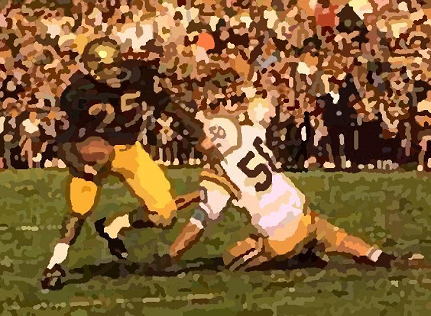2) Mississippi 10-0-1
3) Iowa 8-1
4) Navy 9-2
5) Missouri 10-1
6) Washington 10-1
7) Arkansas 8-3
8) Ohio State 7-2
9) Alabama 8-1-2
10) Duke 8-3
11) Kansas 7-2-1
12) Baylor 8-3
13) Auburn 8-2
14) Yale 9-0
15) Michigan State 6-2-1
16) Penn State 7-3
17) New Mexico State 11-0
18) Florida 9-2
19) Syracuse 7-2
Purdue 4-4-1
Now that I've fixed and expanded all the AP polls of the 1960s, I've compiled lists of the most overrated and underrated teams of that decade, which you can find here.
This final AP poll was the most difficult to fix that I have tackled so far. A parade of upsets after the final poll's release reduced the season to chaos, and rendered this top 20 meaningless. And it wasn't just the bowls. On December 3rd, unrated UCLA (7-2-1) stomped on #10 Duke (8-3) 27-6, and that was a regular season game. Then there were 6 bowl games that featured teams from the AP poll's top 20, and the higher-rated team was upset in 5 of them. Even in the 6th, #2 Mississippi (10-0-1) had one of their worst efforts of the season, a 14-6 win over unrated Rice (7-4).
The biggest upset of them all happened in the Rose Bowl, where #6 Washington (10-1) slapped #1 Minnesota (8-2) with a 17-7 loss. You might think that Mississippi, who was #2 and had the best record among the contenders, would simply have risen to #1 in a post-bowl AP poll, but actually, that is not at all clear. In fact, I don't think anyone could say with any certainty who would have been voted #1 in a post-bowl poll.
But choosing a #1 team for the 1960 season is only the first of many challenges to repairing this completely broken AP top 20.

#6 Washington upset #1 Minnesota 17-7 in the Rose Bowl, throwing the true national championship race into chaos.
